Mozart’s Birthplace
A visit to Mozart’s Birthplace takes about an hour.
There is a text guide for cell phones. Texts accompany the exhibits on the walls of the museum.
Please note that Mozart’s Birthplace is not barrier-free accessible.
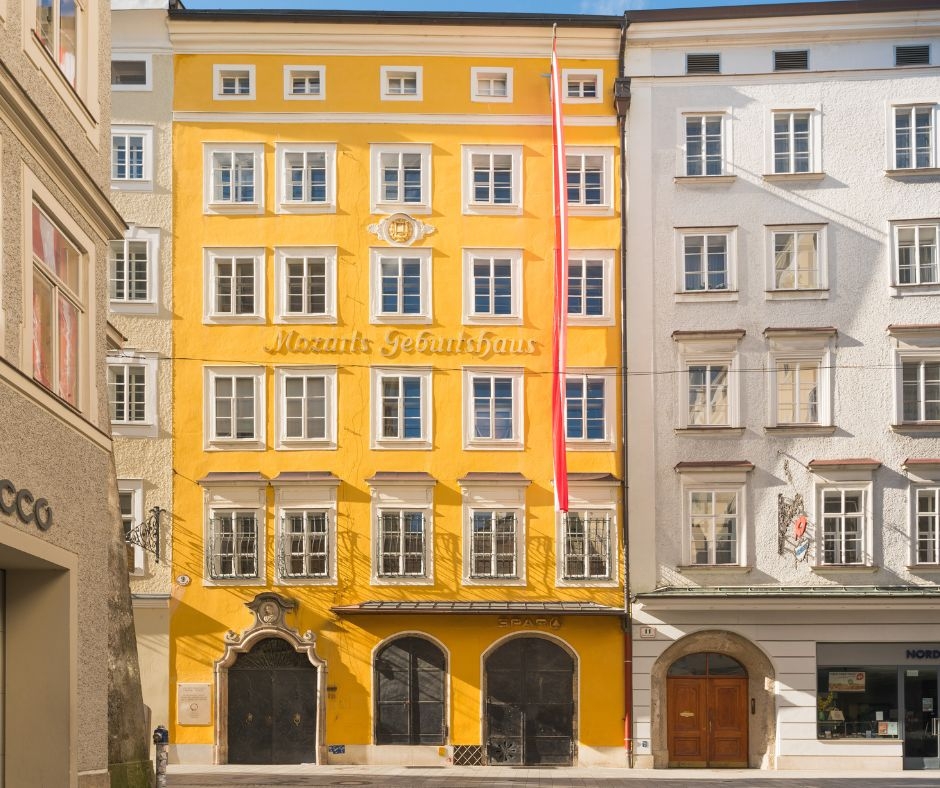

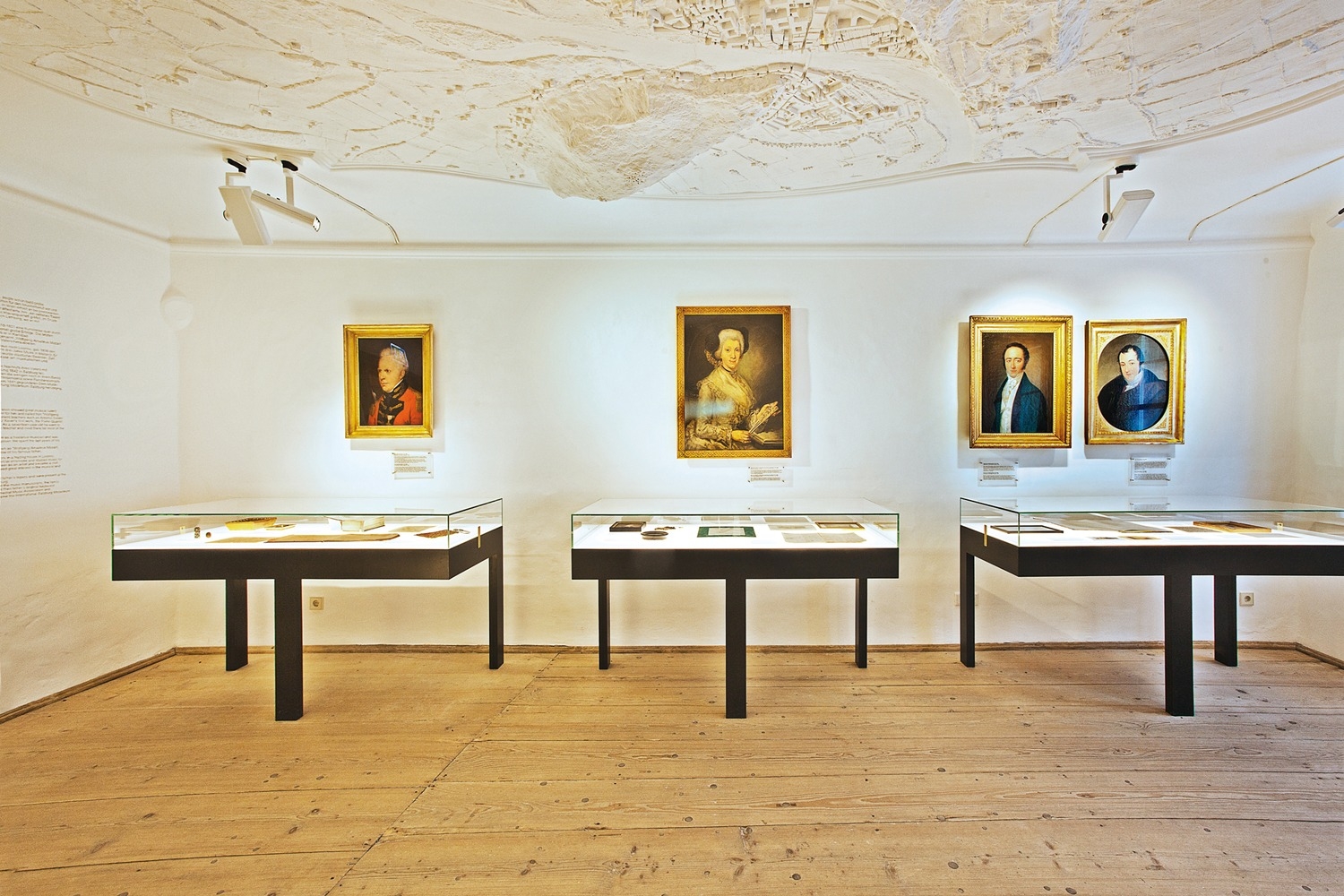
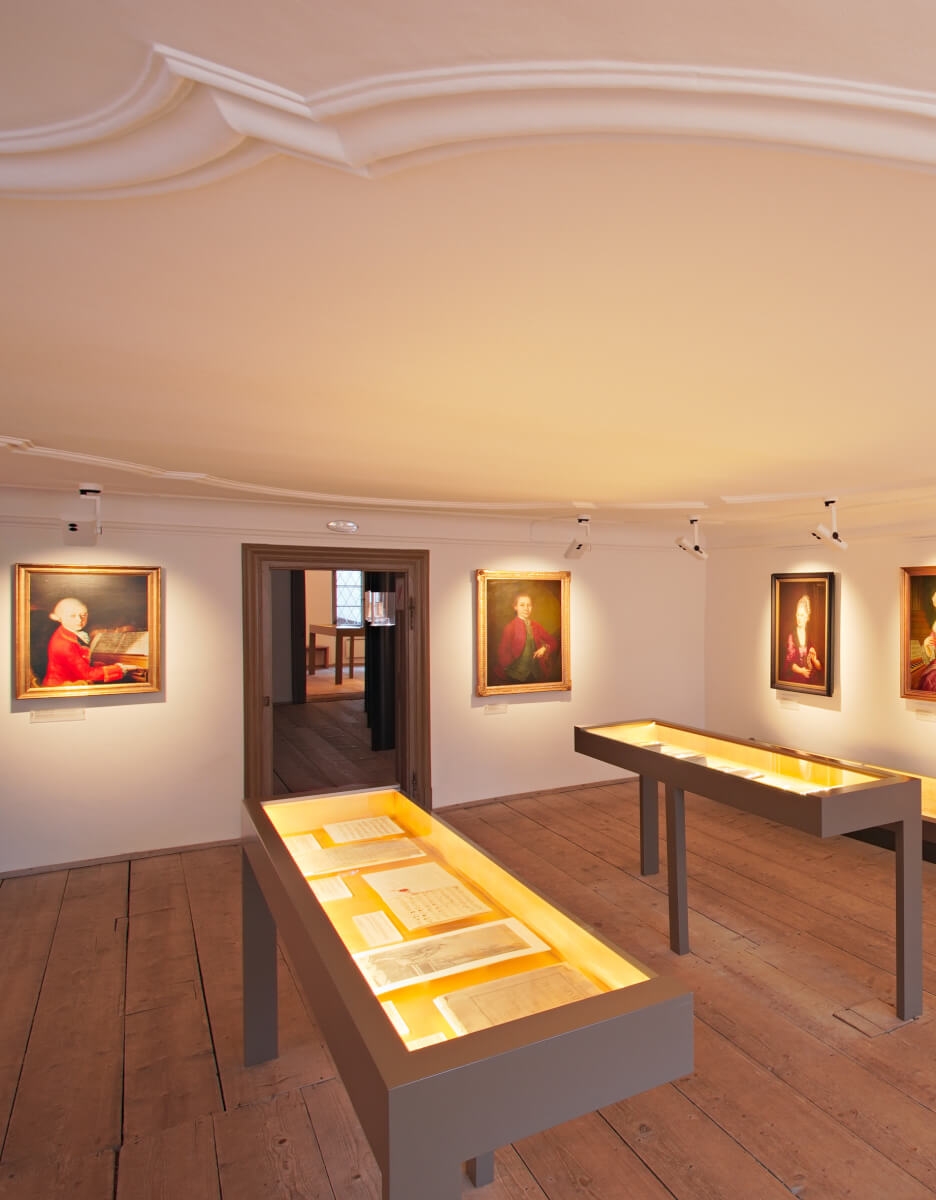
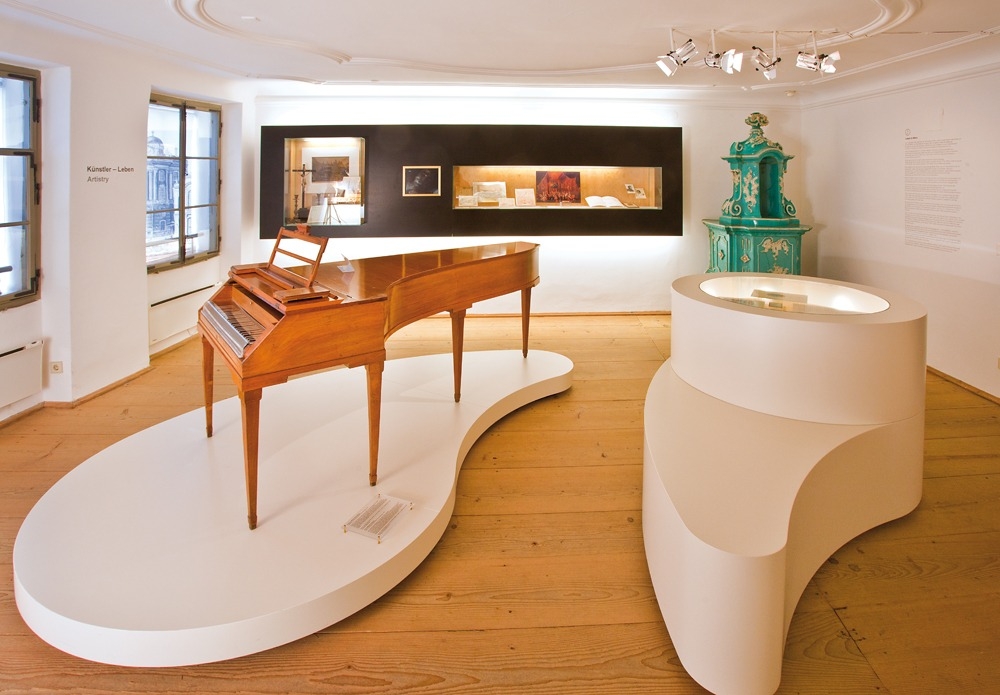
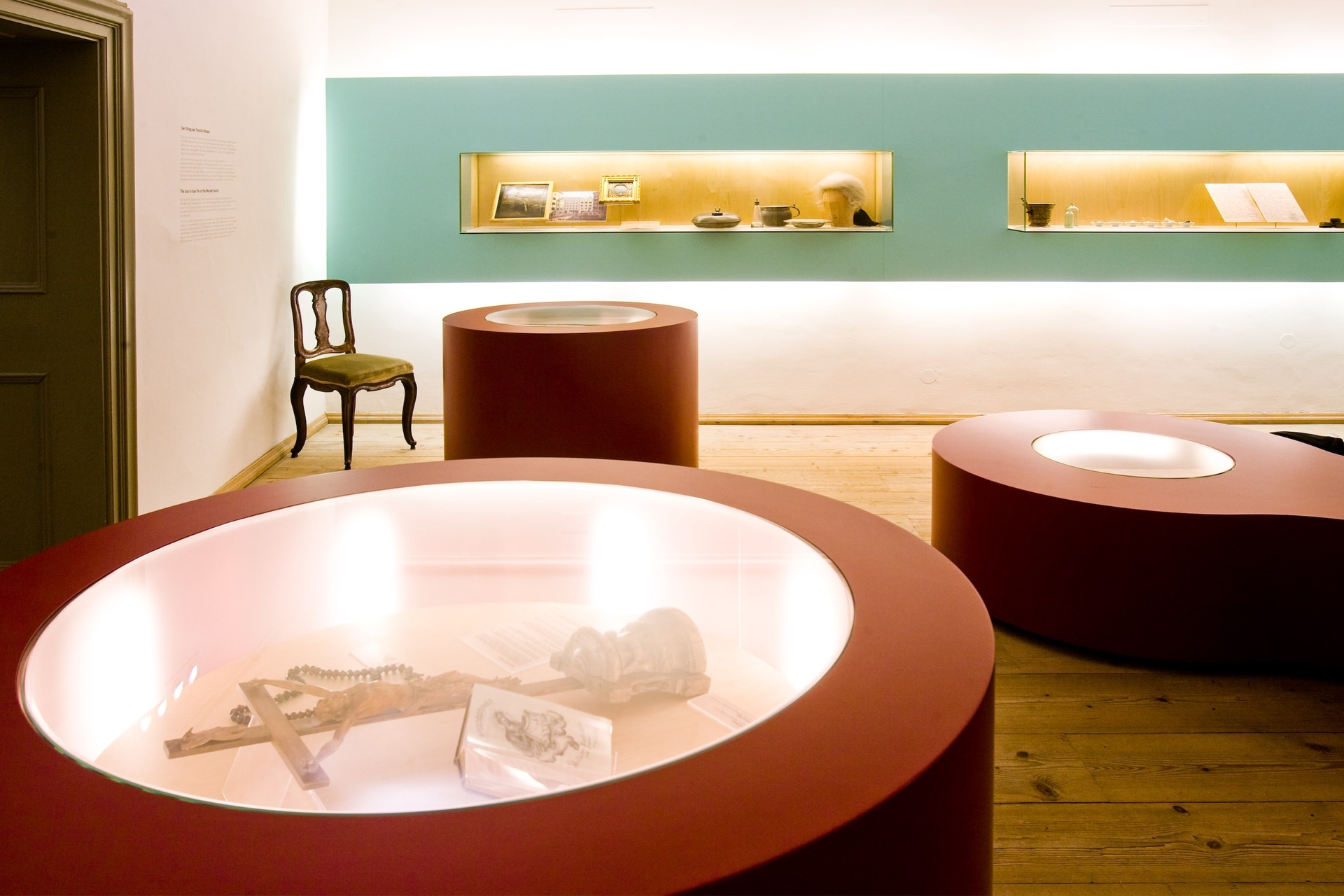

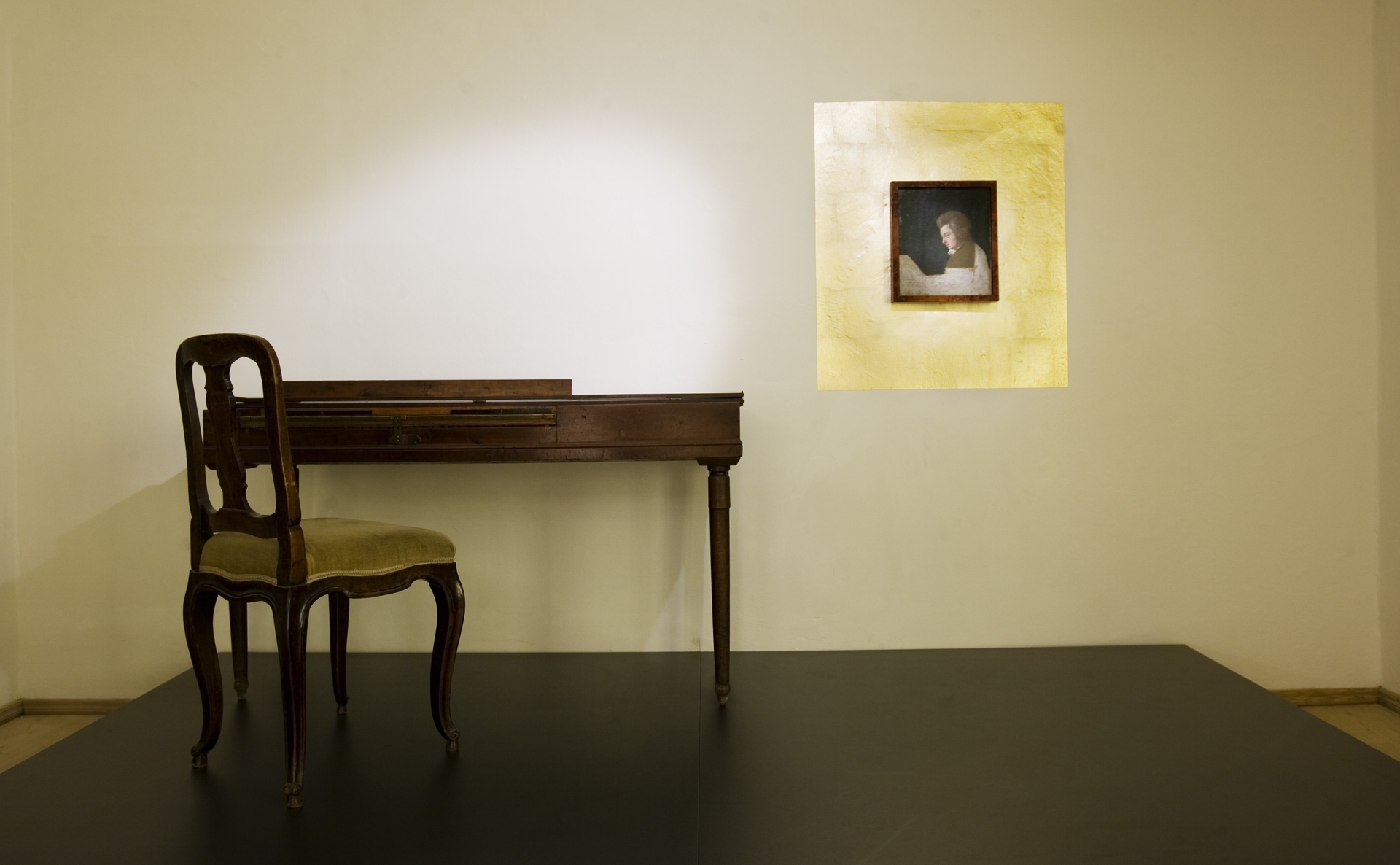









The house where Wolfgang Amadé Mozart was born on January 27, 1756, is now one of the most visited museums in the world. No other place makes the person behind the artist Wolfgang Amadé Mozart and his music as tangible as his birthplace.
In the three-story exhibition, visitors learn details of Mozart’s life – the domestic circumstances in which he grew up, when he began making music, who his friends and patrons were, his relationship with his family, his passion for opera, and much more.
Admission fees
Tickets are available online or at the box office in the museums.
The prices in parentheses are combination tickets for Birthplace and Residence.
The combo ticket is valid for 24 hours from the time of purchase. It is not transferable to other persons.
Persons entitled to a discount must prove their eligibility with a valid identification document.
The admission fee does not include a guided tour.
Payment options: Cash Maestro, Visa or MasterCard, JCB, Union Pay, American Express, Diners Club. The Salzburg Card is accepted here.
€ 15,00 (€ 23,00 combined ticket)
Discount for groups of 10 or more, students up to 27 years, and seniors:
€ 12,00 (€ 20,00 combined ticket)
For students 15-18 years:
€ 5,00 (€ 7,00 combined ticket)
For children aged 6–14 years:
€ 4,50 (€ 6,00 combined ticket)
No admission fee
2 adults with children:
€ 30,00 (€ 46,00 combined ticket)
€ 3,00 per person (€ 4,50 combo ticket)
People with disabilities + one registered accompanying person free
Other accompanying persons pay the reduced price of € 12,00 (Combo ticket 20,00)
Admission is free for Salzburg Card holders
Mozart's Instruments
What would a musician do without their instruments? Since his childhood, Mozart probably hardly passed a day without actively making music. Fortunately, some of the instruments he played have survived to this day. Perhaps it is true that in the eyes of posterity every object that Mozart touched even once exudes a special aura, but the instruments that he himself owned and used for years are particularly helpful to us in understanding his music. Mozart finely tuned his compositions to the special sound characteristics of these instruments. Thus, they can reveal a lot about how he envisioned the sound he wanted to produce.
Mozart’s childhood violin was made by the Salzburg court luthier Andreas Ferdinand Mayr (1693–1764), who was also an imperial house servant and fellow musician of Leopold Mozart. His name is noted on a label inside the instrument.
Although the exact date is not legible, the violin was probably made in the 1740s. It was donated to the Mozarteum Foundation in 1896.

Mozart’s concert violin has since been identified as an instrument from the workshop of the Klotz family in the Bavarian Alps, probably dating from the beginning of the 18th century. The false label on the inside seems to indicate that it was modeled after an instrument by Jakob Stainer. Mozart made a lucky choice if he assumed he really was acquiring one of Stainer’s instruments with their famous “silvery tone”.
When he left Salzburg, he did not take his concert violin with him to Vienna, but left it with his sister. She sold it in 1820 together with his childhood violin.
Since the instrument was handled early on as a kind of Mozart relic, it is in very good and, apart from some minor alterations, almost original condition.

Mozart’s Costa violin is named after its maker, Pietro Antonio dalla Costa, and was made in Treviso in 1764, according to an original label on the inside. Dalla Costa modeled his violins after Amati violins, and today are highly valued as concert instruments because of their warm and powerful sound. Mozart probably acquired and played this violin in Vienna.
After several changes of ownership, it was acquired in 2013 by Dr. Nicola Leibinger-Kammüller with the intention of donating it to the Mozarteum Foundation.

Mozart’s viola was made in the early 18th century in northern Italy by an anonymous luthier. The difficult-to-read interior label attributes the instrument to Paulo Megini in Brescia, but it is not authentic. The viola is the only instrument listed in Mozart’s estate – ‘1 viola in case’ – and was taxed at four gulden.
The Mozarteum Foundation acquired the instrument in 1966 from the heirs of the English music collector Edward Speyer.

Mozart’s fortepiano is neither signed nor dated, but can be attributed to the piano maker Anton Walter (1752–1826) and was probably built around 1782. Mozart acquired it before 1785 as a concert instrument and played it at his public performances in Vienna. ‘Since my arrival [in Vienna],’ wrote the visiting Leopold Mozart to his daughter Maria Anna in a letter dated March 12, 1785, ‘your brother’s fortepiano has been taken to the theater or some other house at least a dozen times. He has had a large fortepiano pedal made, which stands under the instrument and is about two feet longer and very heavy.’ After Mozart’s death, the instrument remained in the family’s possession.
In 1856, the centenary of Mozart’s birth, Mozart’s son Carl Thomas donated it to the Mozarteum Foundation.

Mozart’s clavichord formed the basis of the collection of original Mozart instruments in the Mozarteum Foundation. In 1844, it came into the possession of the Dommusikverein, the forerunner of the Mozarteum Foundation, among the bequests of his younger son Franz Xaver Wolfgang. Inside this keyboard instrument, which with its soft, delicate sound was intended for private use, is a certificate in Constanze Mozart’s hand: “My dear clavier, upon which Mozart played so often and composed Die Zauberflöte, La clemenza di Tito, the Requiem and Eine Freimaurer Cantate … Mozart so loved this clavier, and for that reason I love it doubly!” (RE)

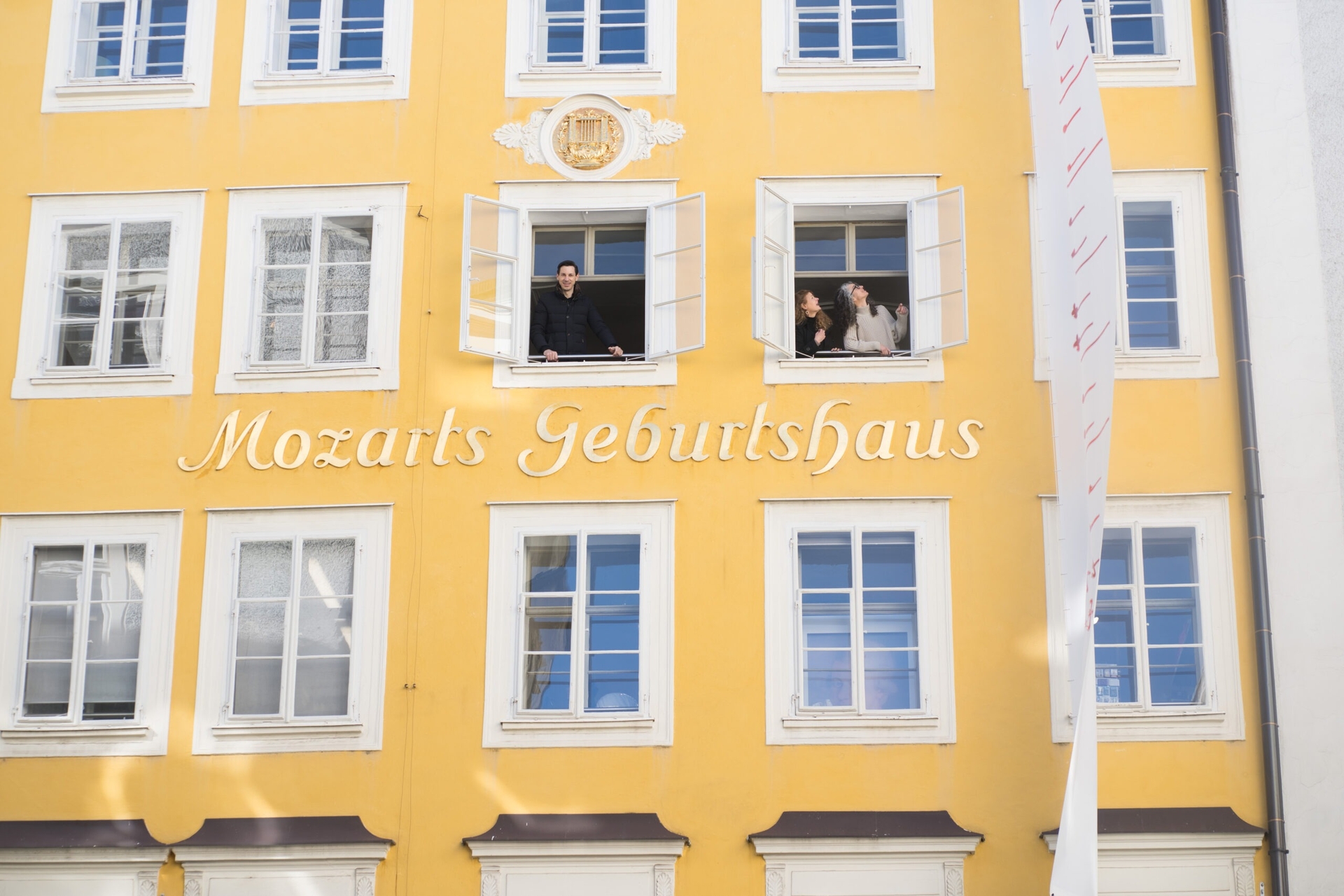
Flying Notes
Flying Notes. K.265.
Andreas Feldinger (artist), Schabelreiter Architecture (realization)
This artwork is a collaboration between the artist Andreas Feldinger, the Mozart Museums and the Bibliotheca Mozartiana of the International Mozarteum Foundation.
Designed for the façade of Mozart’s Birthplace, Andreas Feldinger’s work is based on an original autograph of Mozart’s music found the collection of the International Mozarteum Foundation. The transparent red notes perforating the white flag are a projection of Mozart’s own handwriting. An excerpt from Mozart’s work “Ah, vous dirai-je Maman”, Köchel Catalogue K. 265, better known worldwide as “Twinkle, Twinkle, Little Star”, was chosen because of its international fame and recognition value.
The bright yellow façade of Mozart’s Birthplace has an iconic character and attracts millions of visitors. The flag of the Republic of Austria has been part of this striking facade for decades. The flag is a symbol of the national cultural heritage at home in this house. In the context of this artistic intervention, however, the flag has temporarily relinquished its position to the artist’s interpretation “Flying Notes” by Salzburg artist Andreas Feldinger lends an artistic lightness to the facade of the building at Getreidegasse 9.
And, it goes beyond that. Wolfgang Amadé Mozart and his incomparable musical oeuvre, the far-reaching radiance of which is so obvious worldwide today, has its origins in this building. Today, this cultural heritage enriches not only our nation, but also people of all origins and generations. This is underlined also in the music-autograph selected for this project, that preserves a melody known in countless countries. In this way, “Flying Notes” reflects the activities and ambition of the International Mozarteum Foundation and the Mozart Museums to preserve Mozart’s legacy at his birthplace, while at the same time connecting with the world to make Mozart’s legacy widely accessible.
Flying Notes. K. 265. in the words of the artist:
My art the natural light. I make it the focus and combine it with the cloth of the sail. Inventing movement. The notes should float on the façade. For me, it’s also about other visual experiences. Ahead of the colored shadow. You only see it during the sunlight, for a short time. The dots of color are a luminous accent on the façade and the street. They are never the same. They flicker in the wind. The musical notation can only be recognized on the flag itself.
The artist dedicates this work to his parents.